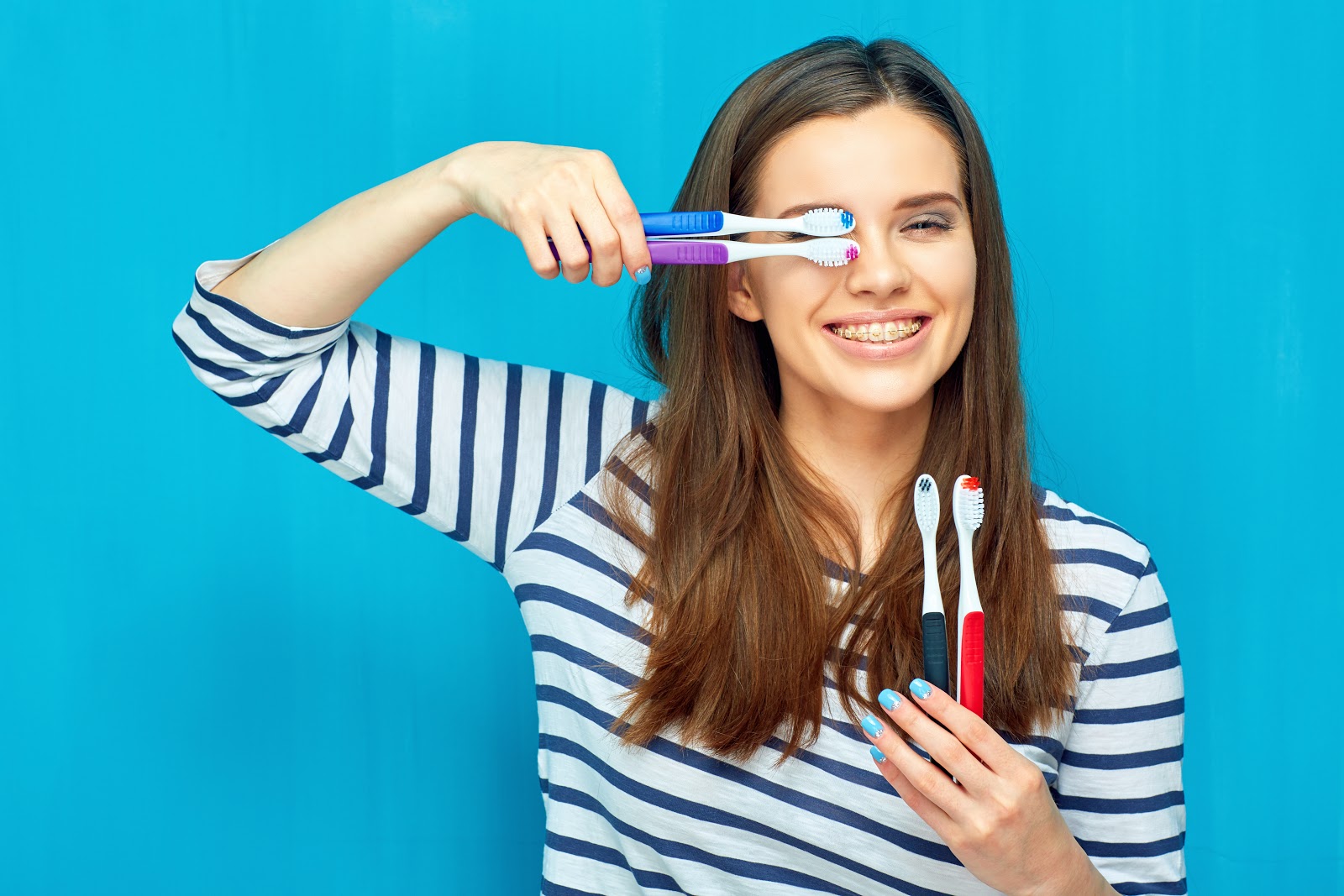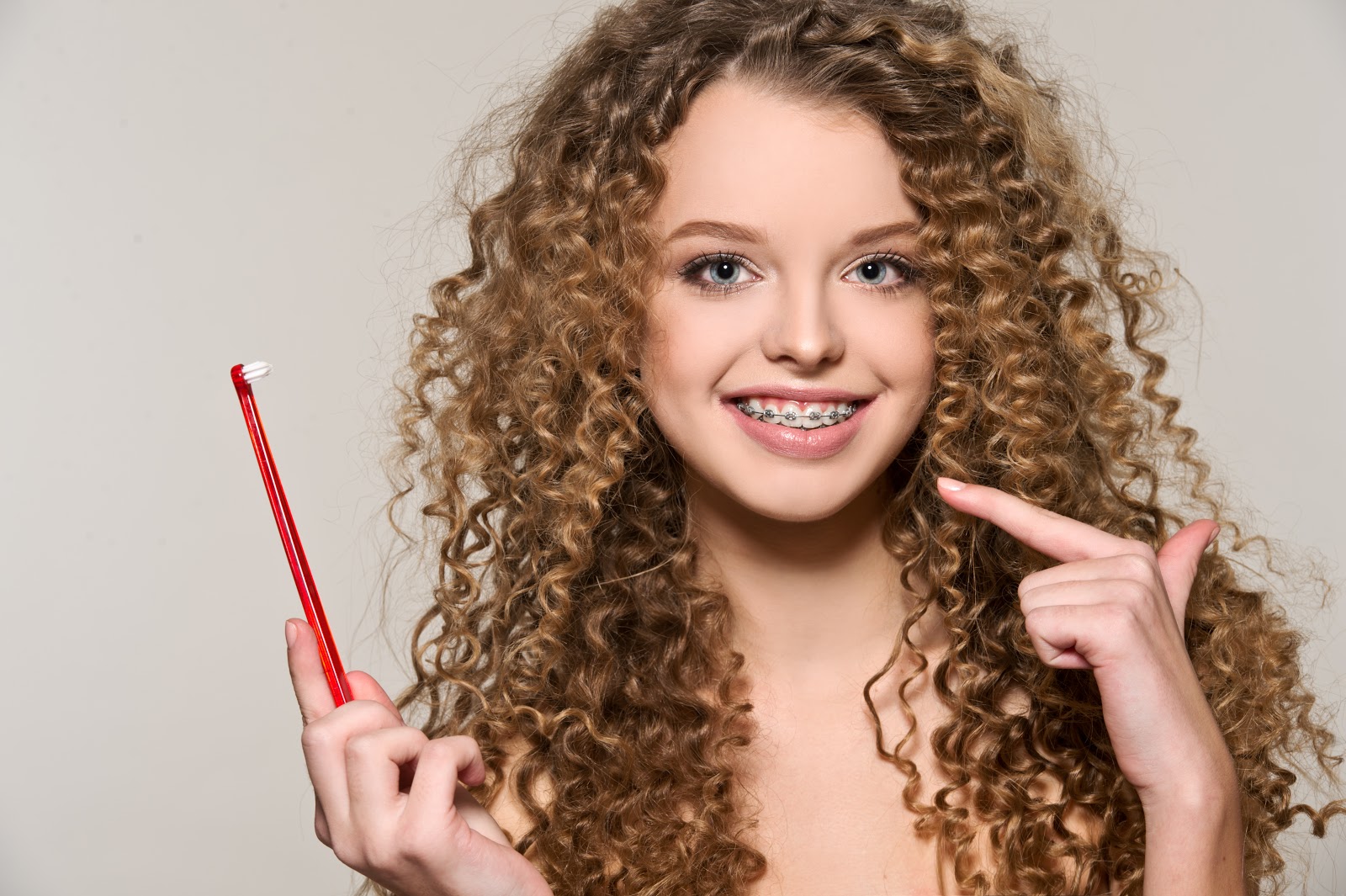Taking care of your braces might require a few more steps than taking care of just your natural teeth but with the right tools, it can be just as easy! Taking all the necessary steps to ensure your smile is on track to being a healthy one is key to having a successful orthodontic treatment.
Special tools
Look for special tools that make getting the job done easier, there are special dental hygiene products that were designed especially for braces. Here are some that can be found in your local drugstore:
Oral B Threaded Flosser: The Oral B Threaded Flosser gets in between your braces comfortably and removes food and plaque from your teeth. It is shred proof which means you can floss with ease knowing your braces won’t break the floss.
Water Flosser: A water flosser is an easy way to clean your teeth and gums while going through orthodontic treatment, the water pressure removes debris and build up from in and around your brackets leaving you with a clean feeling mouth every time.
These tools help to make flossing a breeze while you’re going through orthodontic treatment. Both the threaded and water flosser works great after your braces come off! If you don’t want to switch up your oral hygiene routine too much after treatment, check out these great products.
Brushing

Brushing is the first step in every oral hygiene routine, what you brush with plays a huge roll in how clean your mouth actually is. When considering a toothbrush to clean your braces, consider these factors:
Strength: Braces wearers will want to opt for a soft bristle toothbrush to prevent irritation. Hard bristles can make gums sore and inflamed, especially ones that are very sensitive after orthodontic treatment. Hard bristles also wear down tooth enamel which can cause serious harm to a healthy smile.
Size: It is recommended that patients who wear braces purchase a toothbrush with a smaller head. The reason for this is, a smaller head will enable you to get into all the hard to reach places a normal brush wouldn’t.
Age: Your toothbrush should be replaced every 3-4 months or sooner if you notice the bristles beginning to fray. It is also important to replace your toothbrush after you’ve had a cold or the person you store your brush next to has had a cold. Preventing the spread of bacteria is key to a healthy mouth.
Although the amount of time you spend brushing is what is most important, having the proper tools makes cleaning your mouth that much easier. Having a toothbrush that is best suited to help with your unique needs will leave your mouth feeling more fresh and clean than ever before.
Eat Braces-Friendly Food

With braces it is not hard to maintain your regular diet, there are very few major food restrictions that come with orthodontic treatment. What will change with your diet is how you eat the food, your orthodontist will ask you to use tools to lessen the risk of breaking brackets and wires. Here are some tips that make eating with braces a breeze:
Avoid Sticky Food: Something that is recommended you stay away from during your braces treatment is sticky foods. Foods that are sticky or that have stick fillings can cause serious harm to your orthodontic work and cause tooth decay. It is a good idea to avoid sugary food altogether.
Use a fork and Knife: Eating with utensils lessen the risk of breaking brackets. For example, taking a bite out of an apple can cause detrimental damage to your braces, cutting them in slices is a much safer way to eat them. The same rules apply for food like corn on the cob.
Have an oral hygiene routine

When it comes to your oral hygiene routine and braces, it is important you are using the right products to clean your healthy smile. Knowing what tools will hurt your braces and what ones will help them is very important.
Choose the right tools: Believe it or not, not all toothpaste is made the same! Your orthodontist will recommend you stay away from whitening toothpaste during your treatment so you are not left with light spots on your teeth after your braces are removed. You can reduce the risk of discoloration of your teeth by avoiding food and drinks that are known to cause stains.
Follow Instructions: A part of your oral care routine should always include orthodontic recommended steps. If you were given a retainer to wear at night or during the day, it is crucial to your treatment that you follow through with these steps. Make reminders to care for your mouth properly throughout the day so you don’t put your healthy smile in jeopardy.
Mouth Wash: Mouthwash is a great way to give your mouth an extra clean after you have finished brushing. Food can sometimes get stuck in hard to reach places that you might miss while brushing, mouthwash will loosen the food that is lodged throughout your mouth and help remove them which will significantly lower the risk of tooth decay.
Dental wax + Over the counter pain killers: It is common to experience mild pain and some discomfort after you have your braces put on for the first time or after you have had your wires tightened. Though it might cause some irritation, it is important to maintain your oral hygiene routine. To help with any discmfor you might experience, ask your orthodontist for dental wax and take over the counter pain killers to ease the swelling.